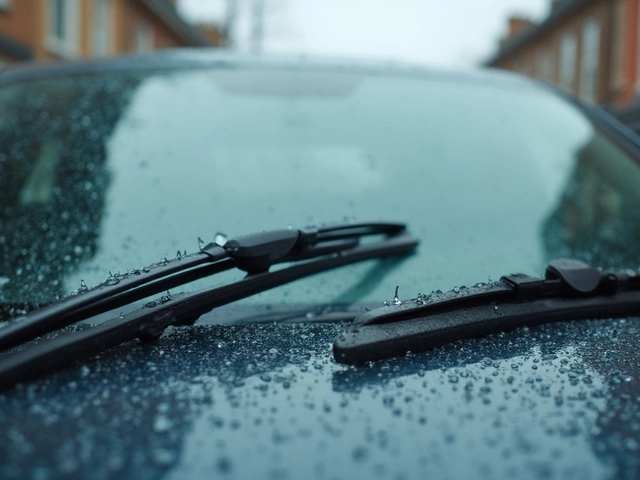You’re driving to work on a warm June morning when suddenly, the temperature gauge on your dashboard spikes into the red. Steam begins creeping out from under your hood as drivers in the next lane flash you worried glances. Not exactly how you planned to start your day. Yet, what if this disaster could have been prevented? Most people don’t realize their radiator is in trouble until things get messy—or expensive. Knowing the signs early saves a ton of headache and cash.
Obvious and Sneaky Signs Your Radiator Needs Attention
Your radiator really is the behind-the-scenes hero of your car’s engine. It keeps the whole thing from melting down. When it’s healthy, you barely notice it. When it starts failing, though, there are a handful of telltale signs that are tough to ignore—and a few subtler ones even seasoned drivers sometimes miss.
The most dramatic sign? Overheating. If you see your temperature gauge climbing higher than it should, or worse, smell hot coolant and see steam, pull over. You don’t want to toast your engine. Some cars, clever as they are, might shut off automatically when they get too hot, but not all of them are that forgiving. If this isn’t a one-off scenario—if it keeps happening—your radiator is a prime suspect.
Leaks are another red flag. You might notice a puddle of green, yellow, or orange liquid under your car. Coolant is usually bright, so it’s tough to miss, unless your parking spot is already a Jackson Pollock painting. If you start topping up the fluid more often than you fill your gas tank, that’s another nudge that the radiator or its connected hoses are letting coolant escape.
Now, on to the sneaky stuff. You might feel your heater isn’t working like it used to—blowing cold air with a grumpy attitude in winter. That’s because your car’s heating depends on hot coolant from the radiator. If it’s not doing its job, the system doesn’t have the warmth to share. You might even hear gurgling or bubbling sounds from under the hood, especially right after turning off the engine. That noise? Air trapped in the system, often thanks to a failing radiator.
| Symptom | Failing Radiator | Normal Radiator |
|---|---|---|
| Car Overheats | Frequently | Rarely/Never |
| Coolant Leaks | Visible (usually colored) | None |
| Sweet Smell | Strong, noticeable | None |
| Heater Problems | Cold air, no heat | Warm air flows easily |
| Engine Temp Gauge | Stays high or fluctuates | Remains in safe range |
- Frequent need to top up coolant? The radiator or hoses are probably leaking.
- See brown or rusty spots inside the coolant? That’s a sign of corrosion and possibly a clog—in other words, the radiator’s on its way out.
- Thin, sludgy coolant? This usually points to breakdown inside the radiator or the mixing of fluids that should never meet, often from a faulty radiator cap or a blown head gasket. Nasty stuff.
Some people even report their car’s performance drops. The engine loses power because it’s constantly running too hot, which makes parts expand and rub together in ways the engineers never intended. Your check engine light might sneak on too, tied to the temperature issues.
If you run through this list and notice more than one issue, it’s time to take things seriously. Radiators don’t fix themselves, and ignoring them doesn’t make them healthier. The earlier you spot these hints, the easier (and cheaper) your fix.

What Causes Radiators to Fail? Not Always Age
Now, you’re probably thinking: how did my reliable radiator end up in this mess? Truth is, even the best radiators don’t last forever, but there’s more to failure than just old age. Let’s break down why these crucial cooling system parts conk out.
Corrosion leads the list. Over time, chemical reactions between the coolant and the metal of the radiator can create rust. Tiny bits flake off, clog airflow, and cause weak spots that leak. What makes it worse? Using tap water instead of distilled or neglecting to flush the system every couple of years. Shortcuts or forgetfulness accelerate rust like nothing else.
Then there’s physical damage. All it takes is a well-placed rock or a fender-bender to harm your radiator’s delicate fins or core. Even minor impacts can dent them enough to mess with cooling efficiency. Ever notice how bugs and debris clog up the grill? That stuff can block airflow, forcing your radiator to work overtime until it just can’t keep up anymore.
Buildup and blockages are another silent killer. If you’ve skipped scheduled maintenance or used the wrong coolant, mineral deposits and sludge can gum up the works. Over time, internal passages narrow, coolant barely circulates, and you’re left wondering why the heater stopped working halfway through February. Some vehicles are also famous for building up more scale than others, especially older or high-mileage models.
Pressure problems come into play, too. The radiator is under more pressure than you might think—most modern cars operate between 13 and 16 psi. If the radiator cap gets weak or faulty, the system can’t hold its pressure, the coolant boils, and it’s chaos under the hood. This can cause hoses to balloon or even burst, creating chain-reaction trouble throughout the whole cooling system.
- A bad thermostat stuck closed means coolant can’t circulate, so the radiator doesn’t even get the chance to do its job. The engine overheats, and you’re stuck calling for help.
- Wrong coolant? That’s a recipe for disaster. Even mixing two types can create thick goop inside your radiator, clogging things up fast.
- Ignoring a minor problem, like a slow leak or light corrosion, rarely ends well. Radiators don’t like being ignored — minor issues can snowball into engine-ruining problems in no time.
So, yeah, it’s more than just time or mileage. Driving conditions, the climate where you live (hello, salted winter roads!), and even the type of coolant you use all add up. Some vehicle makes and models go through radiators faster—certain older Jeep and Ford trucks are notorious for it. Others can run over 150,000 miles if you treat them right.
The bottom line: even a tough radiator isn’t invincible. A little understanding (and regular attention) goes a long way toward keeping you out of the red zone. Skipping these details can turn a minor inconvenience into a major repair.

DIY Checks and When to Call in the Pros
You don’t have to be a gearhead to spot a sick radiator. There are a few easy checks you can do at home—no fancy tools required. Start with a visual inspection: when your car is cool, pop the hood and look at the radiator and hoses. You want to see clean, dry surfaces and clear, bright fluid in the reservoir. If it’s crusty, wet, or the coolant looks like brown pea soup, that’s bad news.
Don’t forget to check underneath for puddles. Leaks usually seep out around hose connections, at the seams, or right under the core. Sometimes it’s just a drip, but left unchecked, that drip becomes a waterfall in a hurry.
Press the radiator hoses gently—soft or mushy hoses? They’re done. If the hoses crunch or crack, same deal. The radiator itself should be solid and show no bulges or signs of rust holes. If your car comes with a removable radiator cap, take a good look at it. Is the seal intact, or is it cracked and split? A bad cap can cause the whole system to fail under pressure.
Smell is another giveaway. Fresh coolant has a sweet, almost candy-like scent. Aroma coming from your vents or under the hood? That often signals a leak that’s hitting something hot, turning liquid into vapor. Some people describe it as maple syrup—trust me, it’s not nearly as tasty.
- Start your car and let it idle—watch the temperature gauge as it warms up. If it climbs steadily and doesn’t level off, something’s wrong.
- Turn on the heater. Still getting cold air after a few minutes? Coolant probably isn’t making its rounds.
- Look for warning lights—check engine, low coolant, or temperature icons (some modern cars are chatty with their dashboards).
If all this sounds a little much, or if you spot signs of trouble, don’t wait. A radiator shop can pressure-test the cooling system, check for blockages, and even do a dye test to chase down sneaky leaks. Most will inspect for free or a small charge, and it beats guessing wrong and frying your engine.
Sometimes, a minor repair—like swapping a hose or fixing a cap—can buy you extra months or years. But if there’s corrosion, cracks, or repeated overheating even after topping things up, it’s probably time to bite the bullet and replace the radiator. Yes, it’s an expense, but nowhere near as brutal as a toasted engine. In 2023, the average radiator replacement for a sedan cost about $800 at most shops, while a new engine was closer to $4,000—and that’s not including the trauma of seeing your favorite ride hauled off on a tow truck.
Your car will usually give you plenty of warning before the radiator waves the white flag. Catching the clues not only keeps your engine in shape, but it also means you’re less likely to be stranded on the side of the road when you least expect it. So, every now and then, give the radiator a little attention. It’s the unsung hero fighting the heat so you don’t have to.


